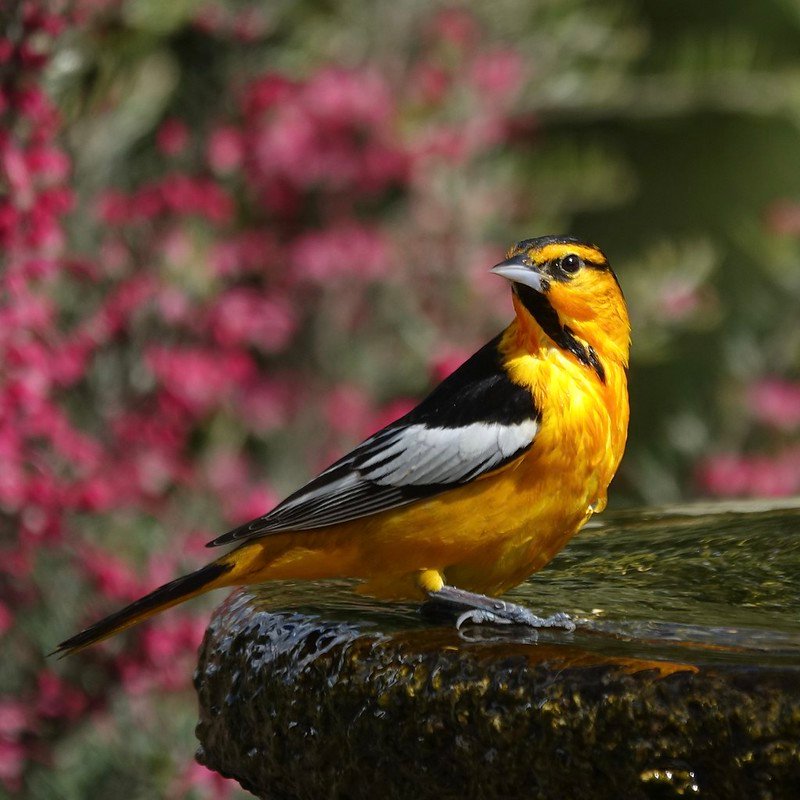Bullock’s oriole, Icterus bullockii is a tiny blackbird found in the New World. This species, together with the Baltimore oriole, was once thought to be a single species known as the northern oriole. This bird is named for William Bullock, an amateur naturalist from England.
Quick Overview: Icterus Bullockii – Bullock’s Oriole
Body size: Around 7-8.25 in (18-21 cm) and a weight of 34 g (1.2 oz)
Main colors: Black, Orange, Yellow-orange
Range: Southwestern part and the Western United States
Migratory Bird: Yes
Best time of the year to see in the U.S.: June, July, August, September
Conservation Status: Least Concern
Bullock’s Oriole Description
Adult males have contrasting black and orange plumage and a black neck patch, while older females may also have a tiny throat patch. The remainder of the head is orange, with a black eyeliner extending to the crown. Orange supercilium The underparts and breast are yellow-orange, while the back is black. The tail is generally black, but the outer three or four retrices are orange, producing a dark T at the tail’s base.

Size
These birds have a length of 7-8.25 in (18-21 cm) and a weight of 34 g (1.2 oz). Their wings could range from 11.25-12.5 in (29-32 cm).
Feeding
Bullock’s orioles eat insects. During the breeding season, they eat predominantly butterflies and their larvae, with some beetles, weevils, and scale insects thrown in. Bullock’s orioles consume mollusks and lizards. This species has been seen consuming and killing hummingbirds. During the summer, fruit makes up around 40% of this species’ diet. Bullock’s orioles prefer cherries, blackberries, raspberries, and figs, according to stomach content. Bullock’s orioles may forage among leaves or in clearings.
Habitat
Bullock’s orioles enjoy riparian, open, and shrub habitats. During the mating season, they can be seen in patches of cottonwood and pecan woodland across their habitat. Willows favor riparian environments but scrub forest trees in dry southern Arizona.
Behavior
During the mating season, Bullock orioles are observed in couples or small flocks. During mating season, males vigorously protect nesting locations. Conspecifics protect the nest, although shared feeding sites are frequently undefended. During the winter, Bullock’s orioles guard blossoming Erythrina breviflora, a nectar source, from other species, notably hummingbirds.
Icterus Bullockii Scientific Classification
- Kingdom: Animalia
- Phylum: Chordata
- Subphylum: Chelicerata
- Class: Aves
- Order: Passeriformes
- Family: Icteridae
- Genus: Icterus
- Species: Icterus bullockii
Best time of the year to see
The best time to see these birds in the United States is during the summer season (June – September).
Distribution of the Bullock’s Oriole in the USA
Bullock’s orioles inhabit western North America, mostly the United States. They are found throughout their range. These birds spend the winter in Mexico, but during the breeding season, they travel north to southern British Columbia.
The Bullock’s Oriole can be found in the following states in the United States – Arizona, California, Colorado, Idaho, Montana, New Mexico, Oregon, Texas, Utah, Washington, and Wyoming.

